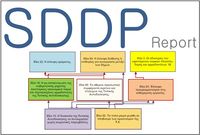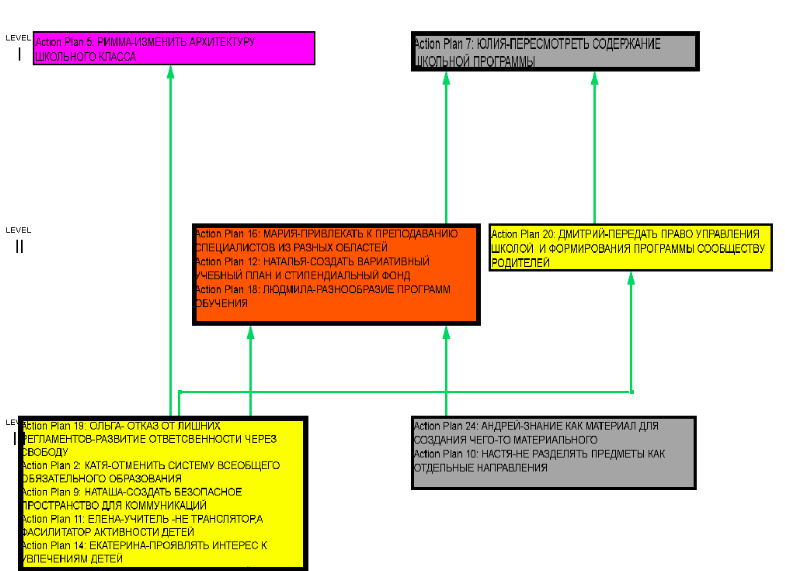SSL Moscow SDD Educational Reforms
|
Executive Summary
The Triggering Question (TQ) was
What specific actions, changes, or reforms could transform our schools into democratic institutions in which learners are empowered to achieve whatever they desire and promote social mobility?
In response to the TQ, the 22 participants came up with 120 obstacles, which were categorized in 20 clusters. Following the voting process, 47 ideas received one or more votes and were structured to create the influence MAP shown below.
According to the participants of this Co-Laboratory, appear to be the most influential were:
- Action #72, .....
- Action #47, ......
The Co-Laboratory was facilitated by Yiannis Laouris. The Co-Laboratory was also attended by 24 Cypriots participants and 2 American scholars who spent about a year on the island working on their Masters theses.
In sum, the participants of the dialogue reported their satisfaction that their voices have been heard and documented and communicated their expectations for follow-up activities to address the diagnosis of their needs.
Sponsor
The initiative

